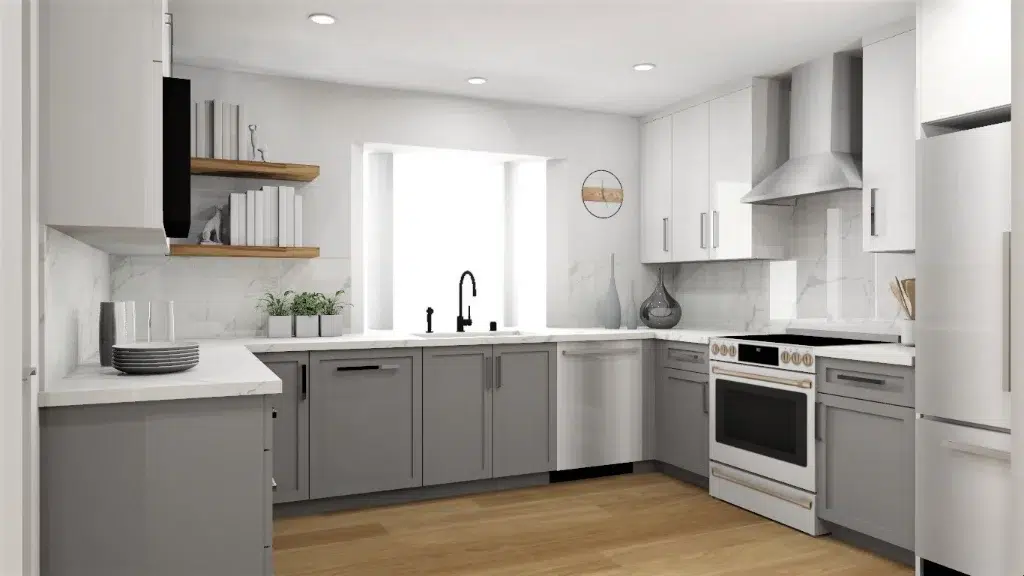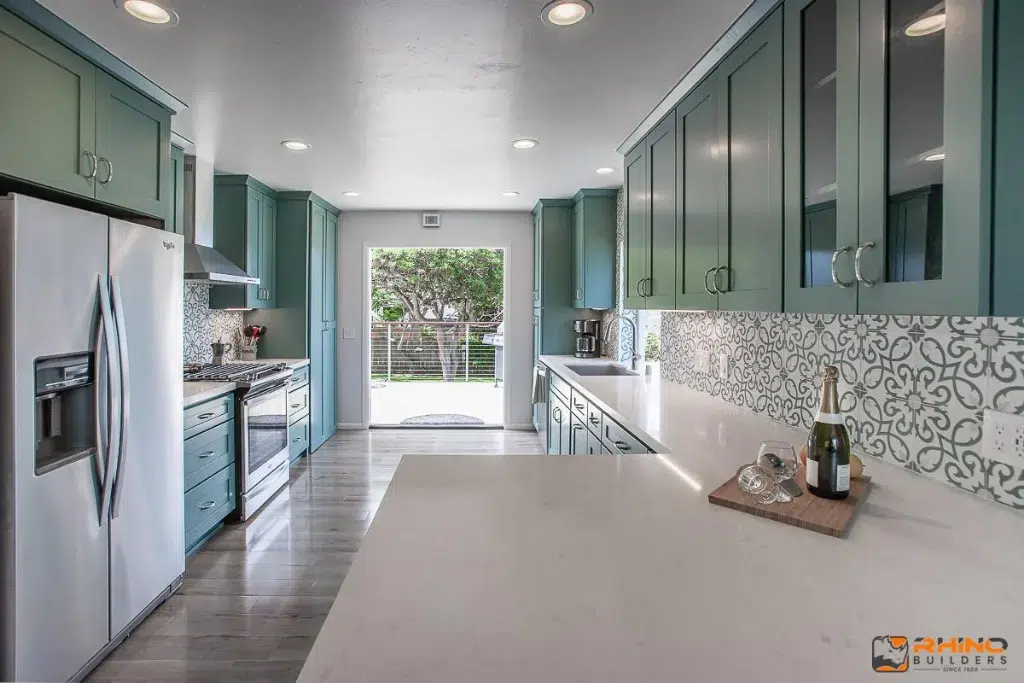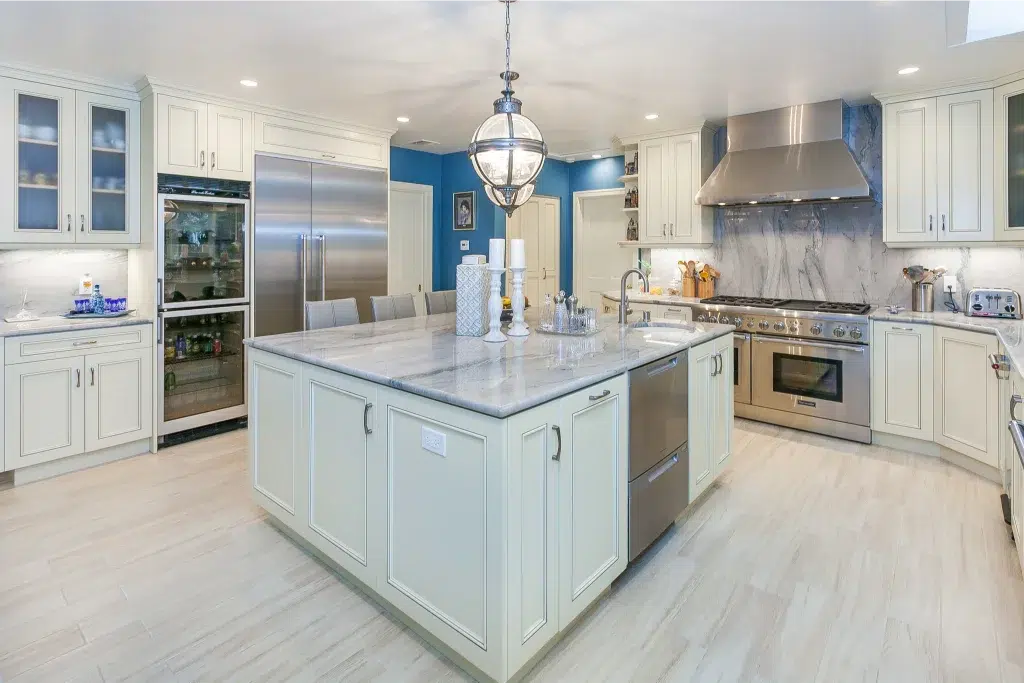You want to renovate your kitchen, but those old cabinets are in the way. Removing them yourself can save thousands of dollars in contractor fees, but where do you start? This step-by-step guide will walk you through the cabinet removal process from start to finish. With the right tools, safety precautions, and techniques, you can take on this kitchen renovation project and create the kitchen of your dreams. We’ll cover all the bases – from emptying cabinets and disconnecting utilities to prying off cabinet boxes and disposing of materials. Follow along as we transform your outdated kitchen into a fresh, open space ready for new cabinets and countertops. Let’s get started on removing those old cabinets safely and efficiently.
Do You Really Need to Remove Your Kitchen Cabinets?
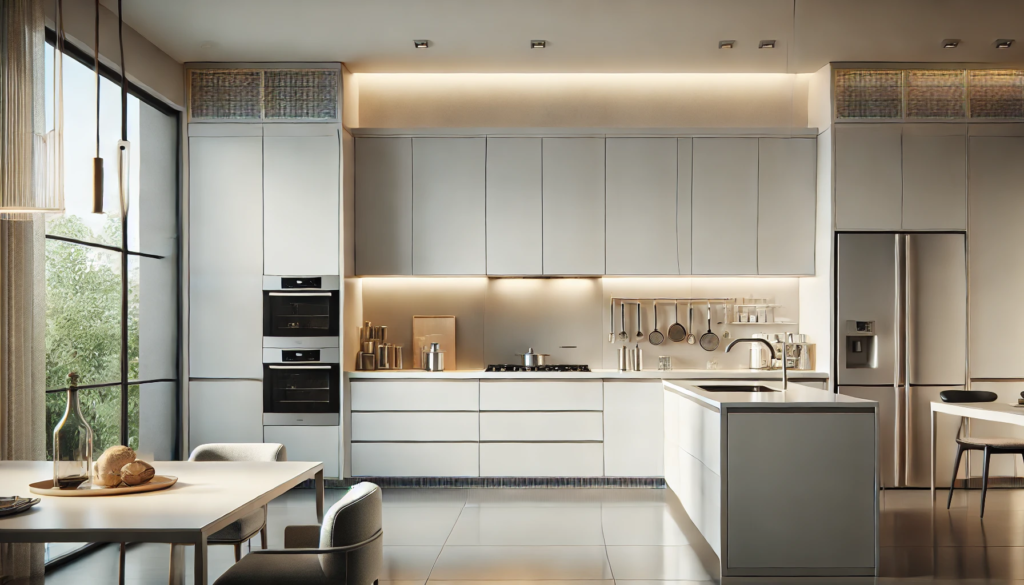
The decision to remove kitchen cabinets is not one to be taken lightly. While it may seem tempting to start fresh with a complete overhaul, it’s crucial to weigh the pros and cons carefully before embarking on such an extensive project.
When Removal is Necessary
There are instances where removing your existing cabinetry is the best course of action:
- Structural damage or severe water damage that compromises the integrity of the cabinets.
- Outdated or low-quality materials that cannot be refinished or resurfaced effectively.
- Inadequate storage space or an inefficient layout that no longer meets your needs.
- Plans for a complete kitchen remodel that requires a different cabinet configuration.
If any of these scenarios apply to your situation, removing the cabinets may be the most practical solution. However, it’s essential to consider the costs and disruption associated with a full cabinet replacement project.
Exploring Alternative Options
Before committing to a complete cabinet removal, consider exploring alternative options that may be more cost-effective and less disruptive:
- Refacing or resurfacing: This involves replacing cabinet doors, drawer fronts, and applying new veneers or laminates to the existing cabinet boxes, giving your kitchen an updated look without the need for a full replacement.
- Refinishing or repainting: If your cabinets are in good structural condition, refinishing or repainting them can breathe new life into your kitchen at a fraction of the cost of a full replacement.
- Reorganizing and maximizing storage: Sometimes, a simple reorganization or the addition of pull-out shelves, lazy Susans, or other storage solutions can optimize the functionality of your existing cabinets.
Before making a final decision, consult with a professional kitchen designer or contractor to assess the condition of your cabinets and explore all available options. They can provide expert guidance and help you determine the most cost-effective and practical solution for your specific needs and budget.
Remember, removing kitchen cabinets is a major undertaking that requires careful planning, budgeting, and execution. By considering all options and weighing the pros and cons, you can make an informed decision that aligns with your goals and ensures a successful kitchen renovation project.
Preparing for Kitchen Cabinet Removal
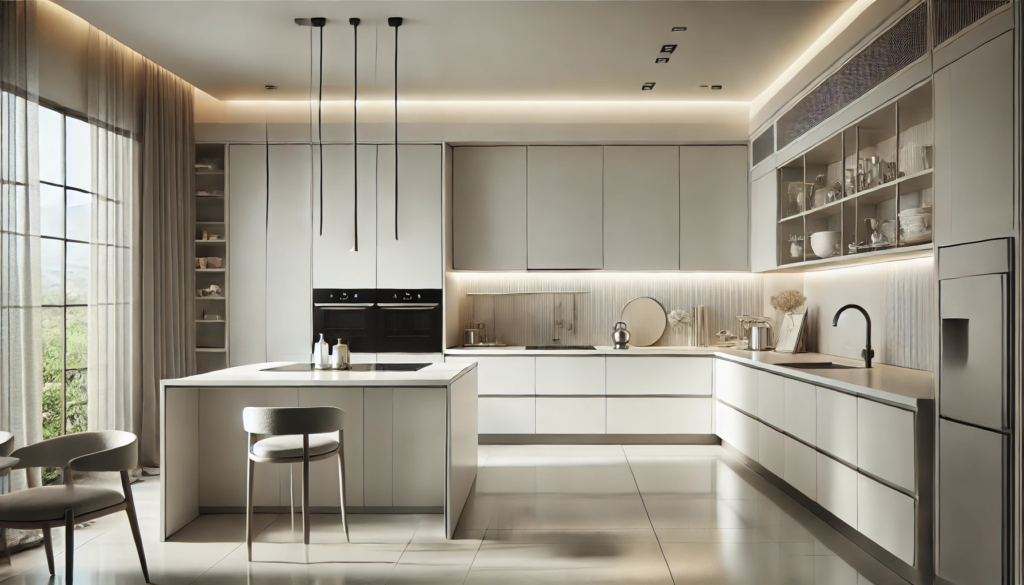
Removing kitchen cabinets is a major renovation project that requires proper planning and preparation. Before you start dismantling your cabinets, there are several crucial steps you need to take to ensure a smooth and successful process.
Clear the Cabinets
Before you begin removing the cabinets, it is essential to empty them completely. This includes removing all dishes, cookware, food items, and any other contents stored inside. Carefully pack these items and store them in a safe and secure location until the renovation is complete.
Protect Your Workspace
Removing cabinets can be a messy and dusty process. To minimize the mess and protect your home, take the necessary precautions. Cover the floor and surrounding areas with drop cloths or plastic sheeting to catch any debris or sawdust. Additionally, consider sealing off the kitchen area with plastic sheeting to prevent dust from spreading throughout your home.
Gather the Necessary Tools
The right tools can make the cabinet removal process much easier and more efficient. Depending on the type of cabinets you have, you may need the following tools:
- Pry bar
- Hammer
- Screwdrivers (Phillips and flathead)
- Utility knife
- Drill (for removing screws or nails)
- Safety gear (gloves, goggles, masks)
Turn Off Utilities
Before you start removing cabinets, it is crucial to turn off any utilities that may be affected by the renovation process. This includes shutting off the water supply to the kitchen sink and disconnecting any electrical outlets or appliances connected to the cabinets.
Identify and Mark Load-Bearing Components
Some cabinets may be load-bearing, meaning they support the weight of the structure above them. Removing these cabinets without proper precautions can compromise the structural integrity of your home. Consult with a professional or refer to your home’s blueprints to identify any load-bearing components, and mark them clearly to avoid accidentally removing them.
By taking the time to properly prepare for cabinet removal, you can ensure a safer and more efficient renovation process. Remember to work carefully and seek professional assistance if you encounter any challenges or have concerns about the structural integrity of your home.
Step-by-Step Guide to Removing Kitchen Cabinets
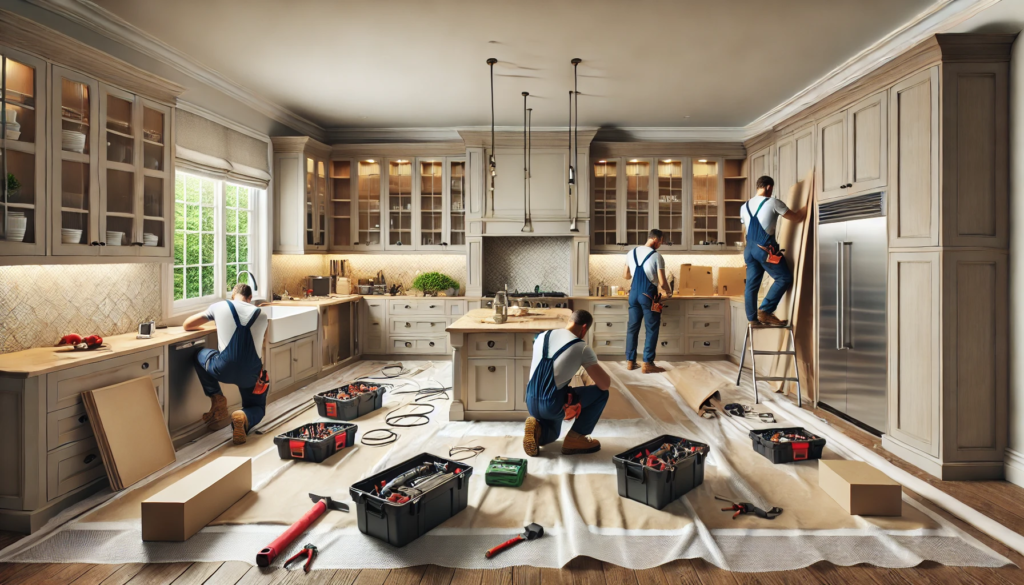
Removing kitchen cabinets can be a daunting task, but with the right approach, it’s entirely manageable. By following this step-by-step guide, you’ll be able to safely and efficiently dismantle your kitchen cabinets, paving the way for your upcoming renovation or remodeling project.
Prepare the Work Area
Begin by clearing the countertops and removing any loose items from the cabinets. Next, protect the surrounding areas by laying down drop cloths or plastic sheeting to catch any debris. Ensure that you have the necessary tools on hand, such as a screwdriver, pry bar, utility knife, and safety glasses.
Disconnect Utilities
Locate and turn off the power supply to any electrical outlets or lighting fixtures within the cabinets. If you have a gas range or cooktop, shut off the gas supply and disconnect the gas line according to local codes and regulations.
Remove Cabinet Doors and Drawers
Start by removing the cabinet doors and drawers, as they will provide easier access to the cabinet frames. Carefully label each door and drawer to ensure proper reassembly if you plan to reuse them.
Detach the Cabinet Boxes
With the doors and drawers out of the way, you can now focus on the cabinet boxes themselves. Locate the screws or nails securing the cabinets to the wall and remove them using the appropriate tools. If the cabinets are attached to neighboring units, you may need to disassemble them in sections.
Dismantle the Cabinet Frames
Once the cabinet boxes are detached from the wall, you can begin dismantling the frames. Use a pry bar or utility knife to separate the individual components, such as the shelves, sides, and back panels. Exercise caution when handling these parts, as they may be heavy or have sharp edges.
Dispose of Unwanted Materials
If you are replacing the cabinets entirely, carefully dispose of the old materials according to local regulations. Consider donating or recycling any reusable components if possible.
By following these steps, you’ll be well on your way to creating a clean slate for your new kitchen design. Remember to work safely and seek professional assistance if you encounter any challenges or unforeseen circumstances.
What to Do After Removing Kitchen Cabinets
After successfully removing your old kitchen cabinets, it’s time to prepare the space for the next phase of your renovation project. Here are some essential steps to take:
Inspect and Repair Walls
Removing cabinets often reveals hidden damage or imperfections in the walls. Take this opportunity to inspect the exposed areas thoroughly. Look for any cracks, holes, or signs of moisture damage. Repair any issues you find using appropriate materials, such as drywall compound or plaster. Ensure the walls are smooth and ready for painting or tiling.
Clean and Prepare Surfaces
With the cabinets gone, you’ll have easy access to clean and prepare the surrounding surfaces. Start by sweeping or vacuuming any debris or dust left behind. Then, use a degreaser or heavy-duty cleaner to remove any stubborn grime or grease buildup on the walls, floors, and ceilings.
Consider Electrical and Plumbing Updates
Now that the area is open, you may want to consider updating any outdated electrical or plumbing components. This could involve relocating outlets, installing new lighting fixtures, or rerouting pipes. Consult with licensed professionals to ensure any updates are done safely and up to code.
Plan for New Cabinets and Appliances
With a clean slate, take accurate measurements of the space to plan for your new cabinets and appliances. Consider the layout and design that best suits your needs and lifestyle. Determine the ideal placement for cabinets, countertops, and any built-in appliances.
Enhance Lighting and Ventilation
Proper lighting and ventilation are essential for a functional and comfortable kitchen. Evaluate the need for additional windows, skylight installations, or improved ventilation systems. Incorporate task lighting, ambient lighting, and under-cabinet lighting into your plans for a well-lit workspace.
Consider Flooring Options
If you plan to replace the flooring, now is the perfect time to do it. Explore various options, such as hardwood, tile, or luxury vinyl planks, that complement your desired kitchen aesthetic and withstand the demands of a busy cooking space.
By taking these steps, you’ll create a clean and prepared canvas for your new kitchen design. Proper planning and preparation at this stage will ensure a smoother installation process and a beautiful, functional kitchen you’ll enjoy for years to come.
Conclusion
In closing, by properly preparing and using caution during the removal process, you can successfully remove your kitchen cabinets on your own. While it does require some basic DIY skills, this project is very doable for most homeowners. Just remember to turn off the electricity and water supply, empty out the cabinets, detach them from the walls and each other, and dispose of or recycle the materials properly. With the right tools, safety gear, and step-by-step instructions, you’ll gain valuable DIY experience and have smooth kitchen cabinet removal. The sense of accomplishment will make the effort worthwhile.
FAQs
Can cabinets be removed without damage?
Yes, cabinets can be removed without damage if done carefully and with the right tools. The key is to proceed methodically and take your time. By removing screws, nails, and adhesives properly, you can avoid damaging the cabinets and the surrounding walls.
How do you remove cabinets without damaging walls?
To remove cabinets without damaging walls, follow these steps:
- Empty the Cabinets: Remove all items inside the cabinets.
- Remove Doors and Shelves: Unscrew the doors and shelves to lighten the cabinet.
- Locate Fasteners: Identify screws or nails that attach the cabinets to the wall.
- Remove Fasteners: Use a drill or screwdriver to remove the screws. If nails are used, a pry bar can gently loosen them.
- Cut Caulk or Adhesive: Use a utility knife to cut through any caulk or adhesive between the cabinets and the wall.
- Gently Pry: Use a pry bar or putty knife to carefully pry the cabinet away from the wall, starting at the top and working down.
How to remove glued kitchen cabinets?
Removing glued kitchen cabinets can be more challenging. Here’s how to do it:
- Score the Adhesive: Use a utility knife to score the adhesive along the edges of the cabinets.
- Heat the Glue: Apply heat using a heat gun or hairdryer to soften the glue. Be careful not to overheat and damage the cabinets or walls.
- Pry Slowly: Use a pry bar or putty knife to pry the cabinet away from the wall gently. Work slowly and evenly to avoid breaking the cabinet or damaging the wall.
- Clean Residue: After removal, use a scraper and adhesive remover to clean any remaining adhesive residue from the wall.
Are kitchen cabinets glued together?
Kitchen cabinets can be glued together, but they are typically secured with screws and nails for stability. Glue is often used in addition to mechanical fasteners to enhance strength and durability, especially in heavy-use areas.


